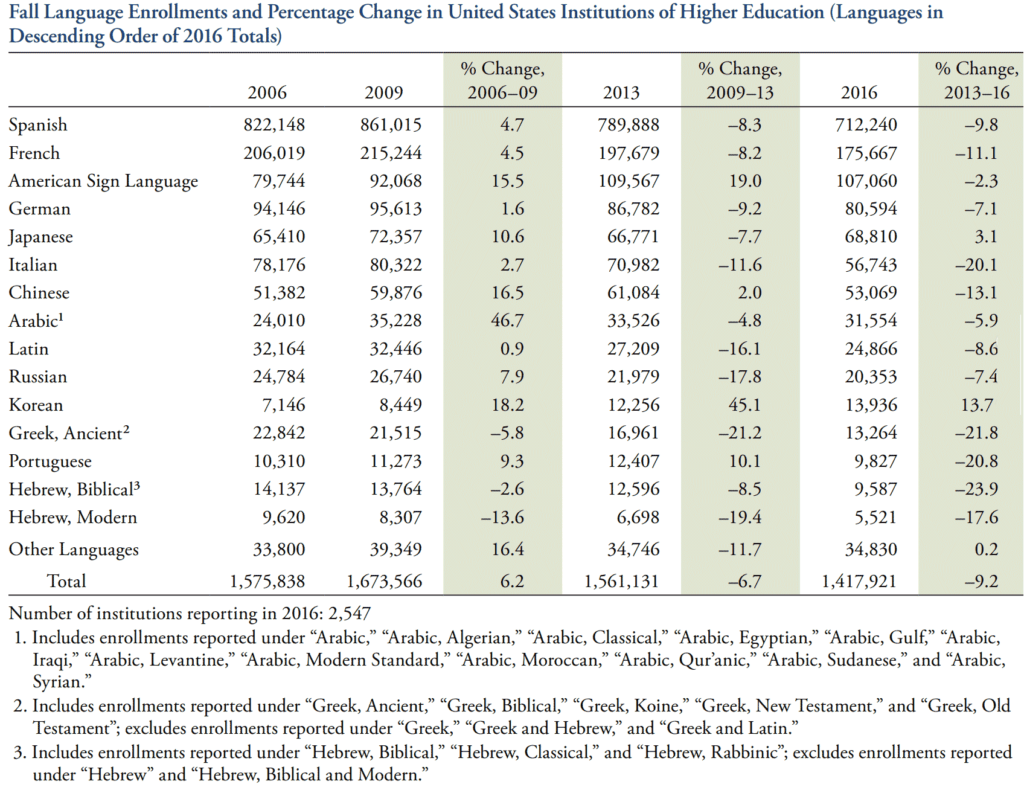The last time I presented the figures for people studying Mandarin in U.S. colleges and universities, the strong but over-hyped growth of the first decade of the century had stalled.
In the newest figures, recently released by the Modern Language Association of America, the number of people in Chinese classes has fallen. Although the total enrollments in languages other than English fell 9.2% between fall 2013 and fall 2016 (the second-largest decline in the history of the MLA’s census), the decline in enrollments in Mandarin classes was significantly greater than that.
The MLA says the decline between 2013 and 2016 was 13.1 percent. The true amount is greater.
MLA’s table
As I mentioned above, the drop is even greater than given in the table, because, unless one looks carefully and beyond the MLA’s summaries, the MLA gives misleading figures for enrollments in ‘Chinese’ classes. (See the previous link to understand why my figures are different than those in the MLA table above. I’ve also excluded classes in literary Sinitic from this year’s compilation, so the figures are slightly different for some years than in my previous posts.)
So here are better figures, which combine those for classes labeled “Chinese” with those for classes labeled “Mandarin.” Not included in my figures are numbers for “Chinese, Classical” or “Chinese, Pre-modern” — or for Cantonese, Taiwanese, or additional Sinitic languages other than Mandarin.
The real decline from 2013 to 2016 is 14.3 percent, not 13.1 percent.
The highest growth between 2013 and 2016 was in Korean, which is now in eleventh place, having surpassed Ancient Greek, Biblical Hebrew, and Portuguese. Note, too, that enrollments in Japanese increased in the most recent survey.
Sources:
- MLA LANGUAGE ENROLLMENT DATABASE, 1958–2016 (accessed March 9, 2018)
- Enrollments in Languages Other Than English in United States Institutions of Higher Education, Summer 2016 and Fall 2016: Preliminary Report, by Dennis Looney and Natalia Lusin, Modern Language Association, February 2018



Interesting!
This is surely related to: https://pinyin.info/news/2018/china-attracting-fewer-and-fewer-u-s-study-abroad-students, since the reasons for studying Mandarin in either the US or as an American student in China, are bound to be very similar. In fact, many Americans might study Mandarin in the US, in preparation for studying in China.
The focus on characters instead of the “oral” skill (i.e., Pinyin), especially in during the first years, surely wears off students, and rightly so…
Pingback: The Dimming Future of Chinese Language Education – Taiwanitron